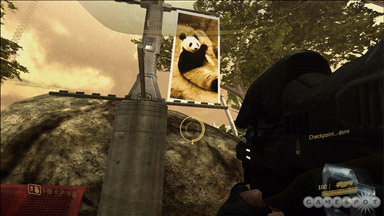Numbers from 2D Boy
World of Goo was released a little more than a year ago now, and in celebration 2D Boy had a “name your own price” – week. This seems to have gone well and they are now prolonging the week until sunday. As they have done before, 2D boy have also posted some stats relating to the events, suggesting that people tend to pay what they can afford rather than what they think the game is worth (or, if you are a skeptic, that people tend to rationalize), among other things.
I disagree with Carmel’s conclusions sometimes – for example while I am sure they were right to skip DRM for World of Goo (and I, on a personal basis, dislike DRM), I have to play the devil’s advocate and point out that the financial and legal situation for a large corporation shipping a mainstream game is quite different and I do not think his reasoning can be applied universally. On the other hand, I do not think that was his intentions either and – this being the important part – the fact that 2D Boy are so open with their statistics leaves the conclusions up to the reader entirely. Looking over the numbers and quantized facts about game development is always interesting, especially when it concerns a game as good as World of Goo.
Machinarium

Amanita Design are probably most famous for the Samorost games, and while Machinarium as their first really long production is a lot more solid in many ways, it is quickly obvious that they are sticking to their strengths. Machinarium extends on the Samorost series by having an inventory, more complex and varied in-game puzzles as well as a bigger world with more backtracking, but it is still a rather straightforward and simple adventure game with odd characters wordlessly bringing the story forward. And I do mean that in the best possible way, for while it might not be the most earth-shaking experience of recent times, Machinarium is a joy to play through.
As far as adventure games go, Machinarium is fairly logical. There is the odd action that is really hard to predict, or the few places where you need to click a really small area to pick up some nearly invisible object, but usually you are constricted to a select few areas so even when you have to revert to trying everything on everything you usually find the solution pretty quickly. Also, the game sports an in-game walkthrough that you can unlock for any specific area by playing a short shoot-em-up- game for a minute or two; not a particularly good game in itself, maybe, but an interesting twist that makes you feel like you have at least done something to earn your progress when you look in the cheatbook. Also, the presentation of the game is really good – both the music and the graphics are well-made and fit the setting very well. Machinarium won the IGF excellence in visual arts award last year, I am personally reminded of the works by Sven Nordqvist by the designs although that probably is only due to my own upbringing.
Machinarium is not the perfect game, it is sometimes annoying to have to put an item back into the inventory once you have found out it doesn’t work, and a few puzzles feel kind of tacked-on and hard to find. It is a very nice game, though.
Max Barry on virtual violence
Australia is, like Germany, one of the countries in the world were unrated media is actually forbidden – games refused a rating by the government’s media classification organ cannot legally be sold there. What makes Australia unique is that it is also one of the few democratic countries in the world where the highest age rating you could grant is 15.
Max Barry, Australian author and originator of the web game Nationstates, has spoken up on this in a recent blog post;
the game developer, like other developers before it, deleted some of the gorier parts and resubmitted it. The Australian Classifications Board noted that “large and frequent blood splatters are seen,” but now “dead bodies and blood splatter disappear as they touch the ground.” You can still rip zombies to pieces with a chainsaw, but “no wound detail is shown.” It was awarded an MA15+ classification (meaning 14 year olds and younger require a guardian present), tagged: “Strong bloody violence.”
Instead of Australia having a violent, bloody computer game restricted to adults, it will have a violent, not-quite-as-bloody game on sale to children. This is the effect of our law: to take content that was designed for adults and tweak it until it scrapes under the MA15+ bar. We’re making available to children material they would not otherwise see, clustered at the extreme end of what is acceptable.
… An interesting point, to be sure. I get into more detail in my virgin post at the Game Industry Insiders blog.
Halo 3: ODST

Like with Halo 3, I find myself at a loss for words trying to say something about this title. Sure, there are things to like and things to dislike, but it is Halo – you sort of know what you are getting into when you begin playing, and ODST is no different. I guess I could complain a bit about the developers giving visionary interviews claiming to try and tell a different story through the eyes of someone a bit more human than Master Chief – the game is no different from Halo 3, other than that they have reintroduced medkits which in my opinion made the game worse.
On the other hand, the story is slightly more interesting than in the other Halo titles and it seems kind of unfair to blame someone for stretching the truth a bit in their marketing push. What can be said about ODST is that it feels a lot more toned down than the other Halo titles, not so much in terms of gameplay but in how it presents itself to the player; as a rather desperate struggle to try and find your friends and get out of a warzone rather than as being a supersoldier trying to save the world. There are a lot of subtle things, for example at the Develop conference last year Damian Isla spoke about how they used AI communication to give the player a sense of superiority, and there is a huge difference when not having your enemies covering in fear and calling you a demon as you blast through the areas.
I realize that a lot of people dislike one or several titles in the Halo series and like others. I personally think they are all pretty good entertainment if you are in the mood for that particular flavor of it so maybe I shouldn’t be saying this, but I think liking or disliking Halo is just one of those things you have to make up your own mind about and ODST is as a good game as any of the other three to do it with.